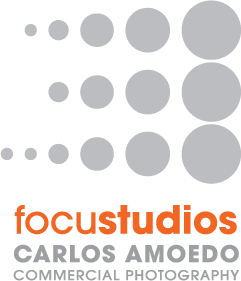Drone photography is an exciting field, to say the least. Over the past few years, we’ve watched drones become smaller, lighter, stronger, and easier to control, all of which are great things for Focustudios aerial photography. We have fully incorporated these technological improvements into our photography and video services, offering our clients spectacular wide-angle shots of all sorts of properties for lower costs than ever before. We’ve gathered some Q&A that we often time get asked.
Q: What kind of drone do you use?
A: Depending on the project, we select the drone and photography equipment that we think will give us the very best results. I fly a larger drone that accommodate both a pilot and a camera operator for bigger productions such as television commercials, live tv or sports events. I also fly a smaller drone when there is no need for a camera operator longer battery times are required.
Q: Are the drones difficult to fly?
A: It really depends on your background. I have 8 years of flying experience, so flying a drone comes a little more naturally to me than it might to someone else. Technology has come a long way and the safety measures built into the firmware have made flying drones much easier now vs. 8 years ago.
Q: What are the biggest challenges in flying a drone?
A: Air traffic and hazards around your drone. There are lots of power lines, trees, and even birds to look out for; you really have to be aware of things that would be very bad for your drone to run into. Obviously, you also have to steer clear of airports and manned aircraft. There are strict guidelines which must be adhered to in certain airspace. The weather can jeopardize your drone’s safety as well, whether it’s precipitation, lightning, or strong winds. Sometimes there are temporary flight restrictions in place during major events, or high security situations. You learn about all of those safety factors and restrictions when you study for your FAA license for professional drone operation.
Q: You have to be licensed to fly a drone?
A: Only if you are using it for commercial purposes. You don’t need a license to fly a drone for fun, although you do still have to understand and obey all the applicable rules.
Q: What’s the transition like from regular photography to drone photography or videography?
A: It certainly takes some getting used to. Learning how to fly is a different skillset than regular photography. Mixing the two is a unique situation. All the basics of photography come into play when you’re using a drone, so starting from that standpoint helps a lot. The big difference, of course, is that you’re putting your camera in the air and controlling it remotely, looking for the best vantage point, lighting direction, and angle…all while safely flying a small aircraft!
Q: Can you see the shot from the camera in real time or do you just have to “eyeball it”?
A: You have to see what the camera sees and with todays technology the resolution is the best it’s ever been. As I fly the drone and position the onboard camera, I have a screen that shows me exactly what the shot looks like. As I said before, at that point the principles are very similar to those of ground-based landscape photography. You look for the best angle that encompasses everything you need, and the exposure settings that will best capture the scene in front of you.
Q: Is there anything else that makes aerial photography harder than regular landscape photography?
A: Instability. On the ground, you can mount your camera on a tripod and use slower shutter speeds to achieve great exposures. As you can imagine, however, with drone photography, the wind is constantly bumping the camera around slightly. A slow shutter speed on a drone-mounted camera results in blurry photos, so we have to use a faster speed. We mitigate this problem as much as possible by avoiding strong winds and using larger apertures and higher ISO settings. Fortunately, that’s much easier to do using drones than times when we’ve had to charter a plane or a helicopter. With flying drones we have a lot more flexibility in scheduling and rescheduling our photo sessions.
Q: How do you expect Focustudios aerial photography to develop in the near future?
A: Right now there are some tricky limitations that we have to work around in connection with the size of the cameras and sensors that you can mount on a drone. The average drone can carry a cell-phone-sized camera sensor, which only gives the photographer so much resolution and control of the image. It will be great when manufacturers build drones that can carry larger cameras and more complex sensors, giving the photographers on the ground more control. Right now we are able to work around the limitations and provide spectacular aerial video services and photos, but it would be nice for it to be a little bit easier.
Q: Can you leave us with one really interesting fact about your Focustudios aerial photography services?
A: A lot of people are surprised to learn that we use our drones indoors! When you’re photographing a large industrial facility or home, for instance, it’s really useful to be able to put a camera at higher elevations and get wide-angle shots of the interior. You don’t have to worry as much about wind and the other major factors outdoors, but there are far more obstacles to look out for. Both of our drones are great for indoor photography; they’re easy to control in those circumstances so we rely on them heavily.
Browse our website to see a few examples of Focustudios amazing drone photography in Orlando Florida and around the country.
Biltmore Hotel, Miami Florida
Cabot Cliffs, Nova Scotia Canada
17 mile drive, Pebble Beach California



